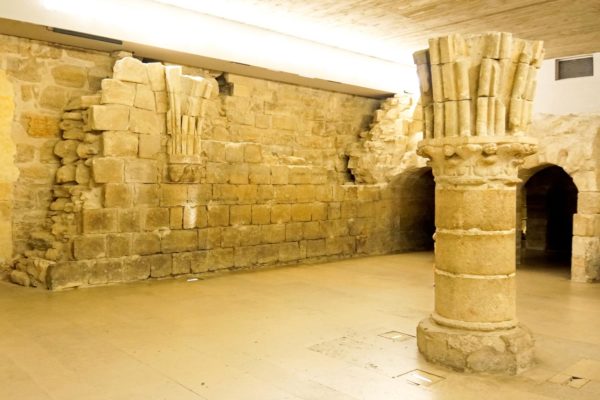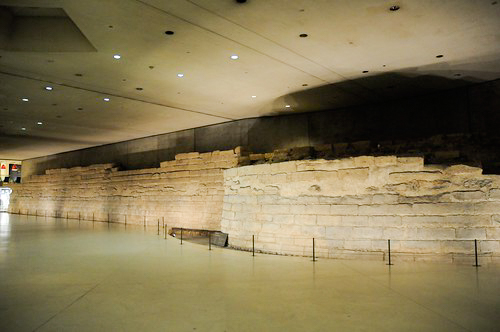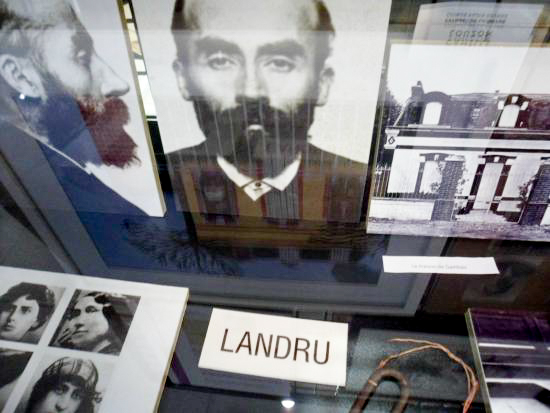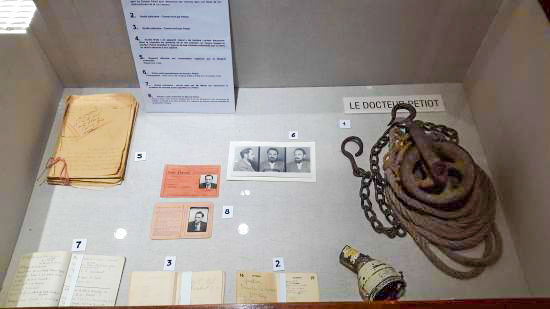In previous blogs, I have mentioned certain museums for various reasons. One that I often mention is the Musée Carnavalet. After two thousand years, Paris certainly has plenty of history to fill a lot of buildings (or underground bunkers), satisfy the interests of every professional or amateur historian, and provide a peek into mainstream or quirky historical events.
Today, I thought I’d share with you some of these Paris museums. Click here to visit the Paris Info web-site. I haven’t covered all the historical museums in this blog, but I did pick the ones I enjoy visiting and ones that are often overlooked. I will start with the three museums that, in my opinion, are the most interesting. I would consider them to be “general” museums as opposed to ones dedicated to a singular topic or event.
Did You Know?
Did you know that Tuchman’s Law, written in 1978, predated the internet and social media? Yet when applied to current events, it explains why negative rather than commonplace or positive effects are feed to us continually. It was written by Barbara Tuchman (1912−1989), a historian and a twice honored Pulitzer Prize winning author. I’ll let you absorb Mrs. Tuchman’s wisdom in her own words.
“Disaster is rarely as pervasive as it seems from recorded accounts. The fact of being on the record makes it appear continuous and ubiquitous whereas it is far more likely to have been sporadic both in time and place. Besides, persistence of the normal is usually greater than the effect of the disturbance, as we know from our own times. After absorbing the news of today, one expects to face a world consisting entirely of strikes, crimes, power failures, broken water mains, stalled trains, school shutdowns, muggers, drug addicts, neo-Nazis, and rapists. The fact is that one can come home in the evening⏤on a lucky day⏤without having encountered more than one or two of these phenomena. This has led me to formulate Tuchman’s Law, as follows: “The fact of being reported multiplies the apparent extent of any deplorable development by five- to tenfold.”
So, to all the Chicken Littles (aka Henny Penny) of the world, the sky is not falling.
Musée Carnavalet
This is my favorite museum, and it serves as the official museum of Paris history. The Carnavalet recently reopened (March 2021) after almost five years of renovation. The museum opened its doors in 1880 in the Hôtel Carnavalet (home of Madame de Sévigné between 1677 and 1694) and later expanded through the 1989 annexation of the Le Peletier de Saint-Fargeau mansion next door. The exhibits cover the story of Paris from prehistory to the present. Since its beginning, the museum concentrates on collecting authentic objects “having belonged to” well-known persons. Examples of this would be Napoléon’s campaign toiletry kit, the chess set used by King Louis XVI while imprisoned in The Temple, and the briefcase used by Robespierre during the French Revolution.
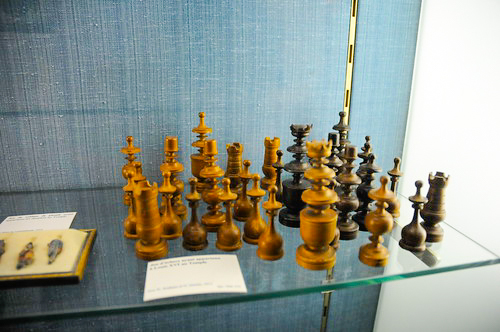
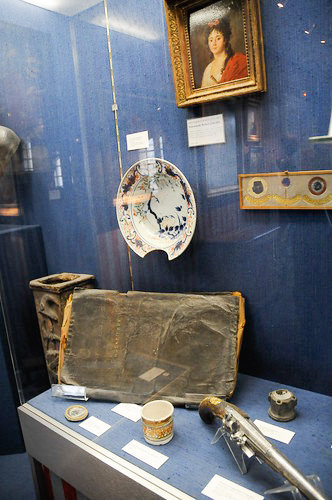
The majority of historical items are donated and exhibited in ten departments within the museum. Today, more than 618,000 items are owned by the Carnavalet. These include paintings, sculptures, scale models, shop signs, drawings, engravings, posters, photographs, and furniture.
My two favorite departments are the ones dedicated to medieval Paris and the French Revolution. The scale model of the Île de la Cité in the 16th-century is especially interesting. The museum owns the unfinished painting by Jacques-Louis David, The Tennis Court Oath. (Refer to my book, Where Did They Put the Guillotine? Volume One.) Personal effects of Marie-Antoinette are included in the exhibit along with the paper partially signed by Robespierre just as he was about to be arrested in the early morning hours of 28 July 1794.
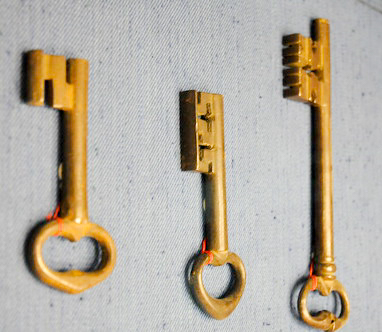
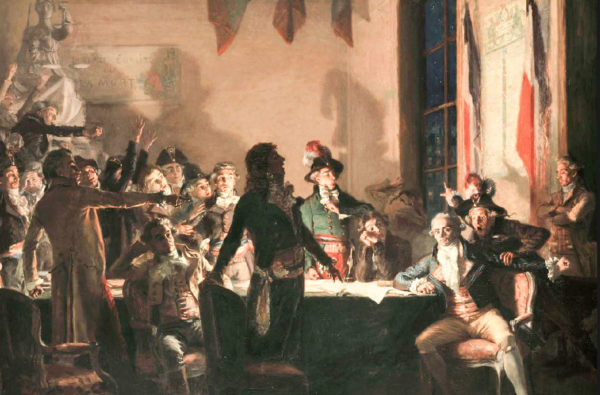
Musée Carnavalet also owns the image repository, Roger-Viollet and the rights to hundreds of thousands of photographs. Some of their photographers include Pierre Jahan (click here to read the blog, Statuemania), Roger Schall, André Zucca, Gaston Paris, and the mid-19th-century photographer, Charles Marville (click here to read the blog, Charles Marville and LeVieux Paris). Many of the images for my first two books (Where Did They Put the Guillotine?) were licensed from Roger-Viollet.
Sandy and I are really looking forward to visiting the “new” Musée Carnavalet if we can ever travel again.
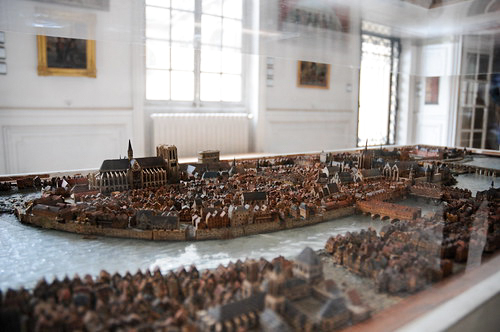
Musée National du Moyen Âge
The Musée national du Moyen Âge otherwise known as the Musée de Cluny, is really two museums in one. First, it covers the Middle Ages of Paris and second, the largest extant Roman bath in France that is located on this site. The original Hôtel des Abbés de Cluny was constructed in 1330 by the Abbot of Cluny, head of the powerful Order of Cluny, and rebuilt in 1510. The mansion served as the residence for the religious leaders when they visited Paris and it was strategically located near the Sorbonne university.
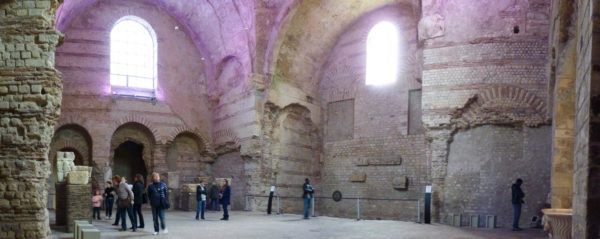
Today, the museum houses the largest collection of medieval arts and artifacts in France. Individual collections include the altar from Basel Cathedral, the Saint-Landry Pillar, stained glass from Sainte-Chapelle, and tapestries of the story of Saint Étienne. Artifacts from the Roman era include the Boatmen’s Pillar discovered in the 18th-century under the choir of Notre-Dame. The second century Saint-Landry Pillar was discovered in the 19th-century on the Île de la Cité.
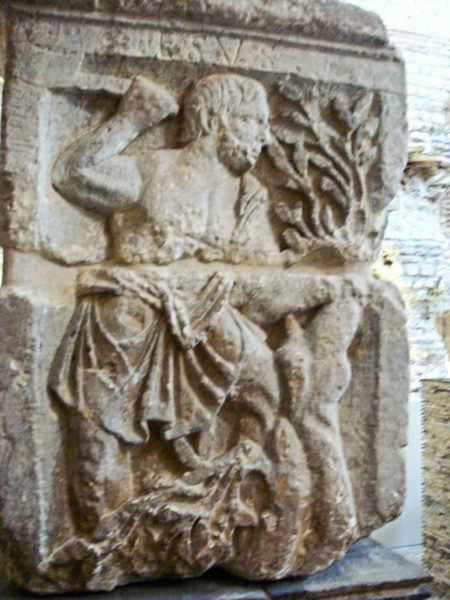
Two of the popular permanent exhibits are the twenty-one stone heads of the Judah kings and The Lady and the Unicorn tapestries (although they are loaned out to various museums at times). There were twenty-eight monumental statues of the biblical kings of Judah along the west façade of Notre-Dame. During the French Revolution, the mobs mistook these statues to be French kings and they lopped off the heads of all but seven. During renovations in 1977 under the courtyard of a private town house in the ninth district, the original 13th-century heads were discovered and moved to the Cluny Museum.
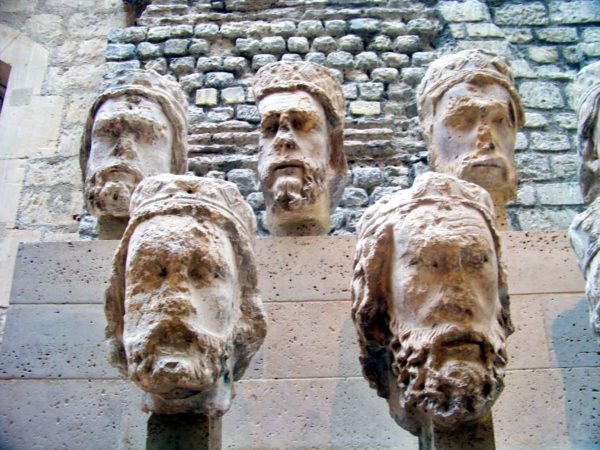
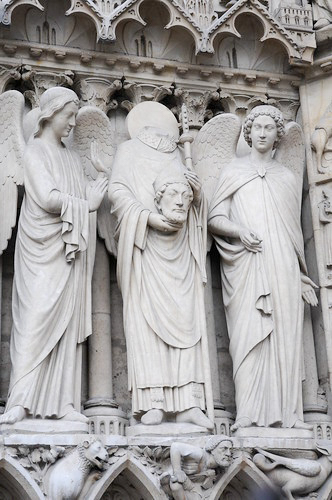
The series of six tapestries known as The Lady and the Unicorn was woven in Flanders from wool and silk around 1500. Five of the tapestries are interpreted to represent the five senses⏤taste, hearing, sight, smell, and touch. The sixth tapestry is thought to represent love or understanding. All the tapestries depict a noble lady with a unicorn on her left and a lion on her right.
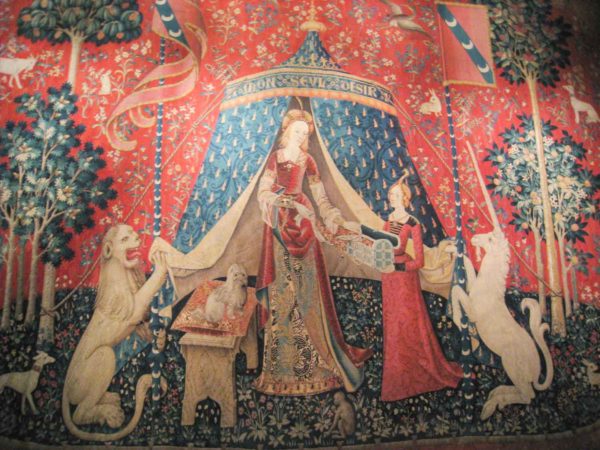
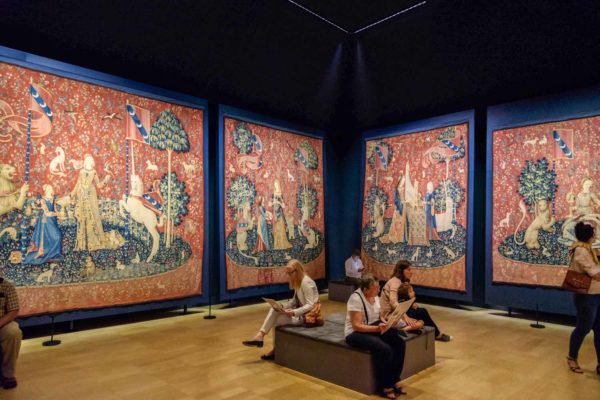
The Louvre
For most people, this is the most recognizable and visited museum in Paris. It makes my priority list for one reason. Before the Louvre was a museum, it was a fortress palace built in the late 12th-century by King Philippe Augustus II to protect Paris from western attacks. Essentially a castle, the palace was quadrilateral (72 meters−236 feet−from east to west and 78 meters−256 feet−from north to south) with an entrance gate flanked by two semicircular towers. Surrounded by a dry moat and anchored by four circular towers, a tall keep was built off-center in the middle. The “big tower” was 15 meters−49 feet−in diameter and about 30 meters, or 98 feet high. King Philippe the Fair transferred the treasure of the Knights Templar to the keep in 1295 after he destroyed the Templars. The keep was demolished in 1528 and every king since Philippe II expanded the Louvre until all traces of the original palace were gone.
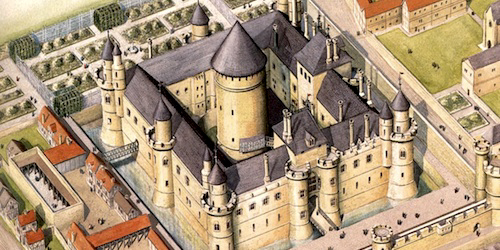
Excavation work in 1866 uncovered part of the old fortress in the southwest area of the cour Carrée. However, the greatest archeological advancement was made in 1984 and 1985 when the substructure of the fortress was integrated into the museum. The base of the keep with its moat, walls, and tower foundations were merged with the modern museum. Discovered in 1882, a nearby room, Salle Saint-Louis, is the oldest in the palace. The walls of the room date to Philippe II while the vaulted ceiling was constructed under King Louis IX (aka Saint Louis) in the mid-13th-century (the vaulted ceiling has been destroyed). The room contains artifacts unearthed between 1983 and 1993 including King Charles VI’s gilded parade helmet.
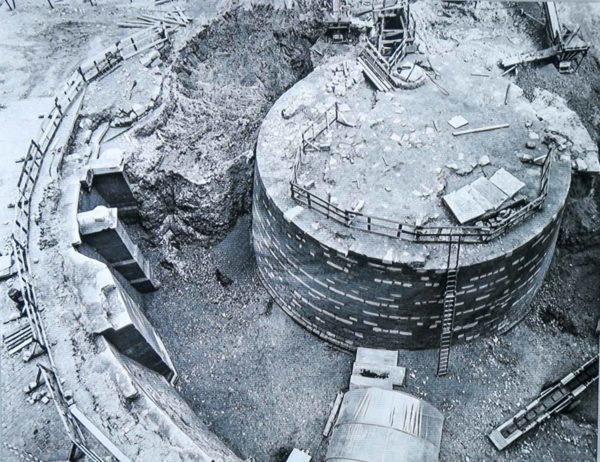
So, these are the top three history museums in my opinion. The next group will be my “Tier Two” museums followed by a list of other interesting museums.
Musée de la Liberation de Paris
Here is another museum that combines multiple subjects. However, the three are intimately connected. The Musée de la liberation de Paris, or The Museum of the Liberation of Paris was moved from its long-time location at Gare Montparnasse to Place Denfert-Rochereau. Located across from the entrance to the Catacombs, the museum honors Gen. Philippe Leclerc (1902−1947) and Jean Moulin (1899−1943). The third focus is on the Communist resistance leader, Col. Henri Rol-Tanguy (1908−2002).
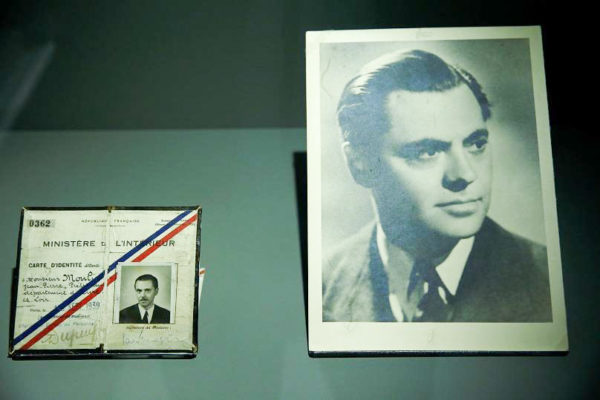
Gen. Leclerc was one of the senior military leaders of the Free French and it was Leclerc’s tanks that rolled into Paris on 25 August 1944 and liberated the city. Moulin was a resistance leader whom Gen. de Gaulle sent to France to consolidate and coordinate the major resistance organizations. He was betrayed to the Germans in 1943 and died because of the torture inflicted on him.
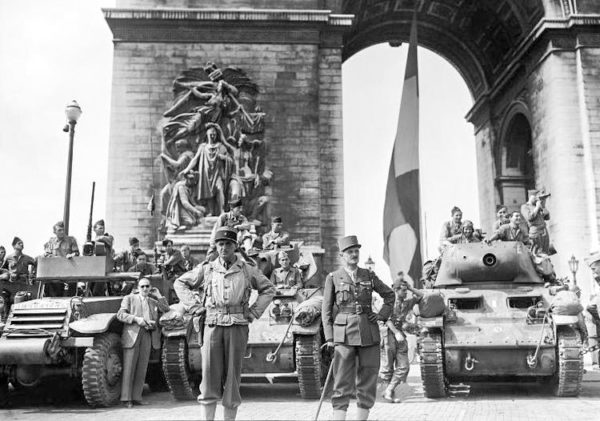
During the week of liberation fighting in August 1944, Rol-Tanguy set up his headquarters in the bunkers located below the pavilion where the museum is located. You can take a tour of the bunker and its twenty rooms including dormitories, a telephone switchboard, and generator. Your experience is enhanced via virtual avatars in the form of Rol-Tanguy, his wife, and staff.
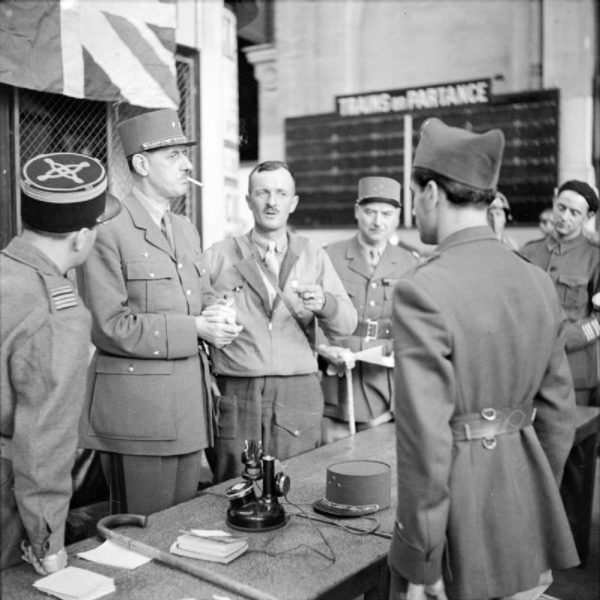
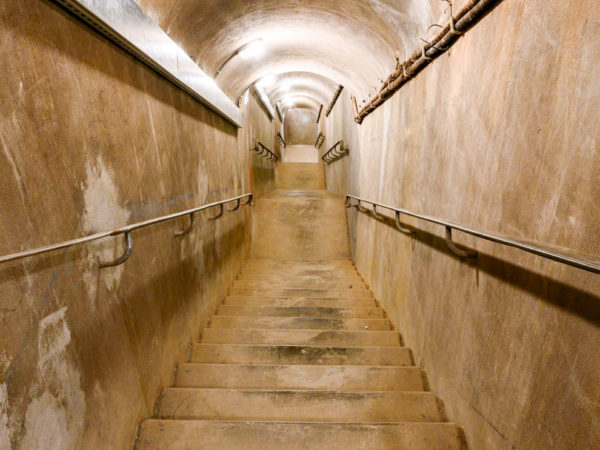
After your visit to this museum, you might as well walk across the street and visit the Paris Catacombs (an immense museum of the dead).
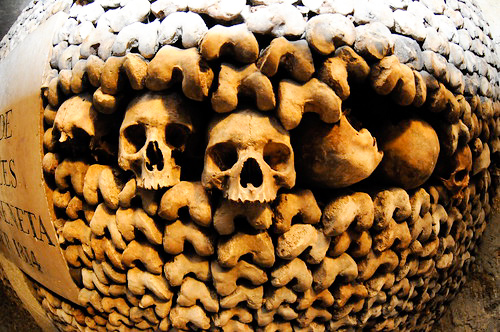
Musée de la Préfecture de Police
The Museum of Police traces the history of the Paris police department. The museum was founded in 1909 by Louis Lépine, the prefect of the police. It is located inside the 5th arrondissement police department. There has been some discussion of moving the museum to a larger facility due to the growth of its collection.
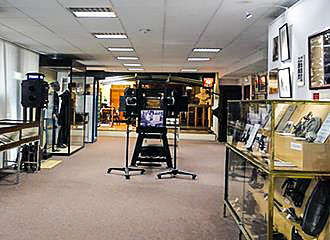
Exhibits, artifacts, and documents tell the story of police history during the past five hundred years. You will follow the police department from its origination in 1667 on the orders of King Louis XIV to the modern day. Famous crime cases (read: sensational) are represented by actual artifacts. Poisonings, the queen’s necklace scandal, famous gangsters, and serial killers are just some of the nefarious highlights. The museum also has a used guillotine blade on exhibit. There are plenty of weapons, counterfeit items (including World War II documents), and newspaper clippings (in French).
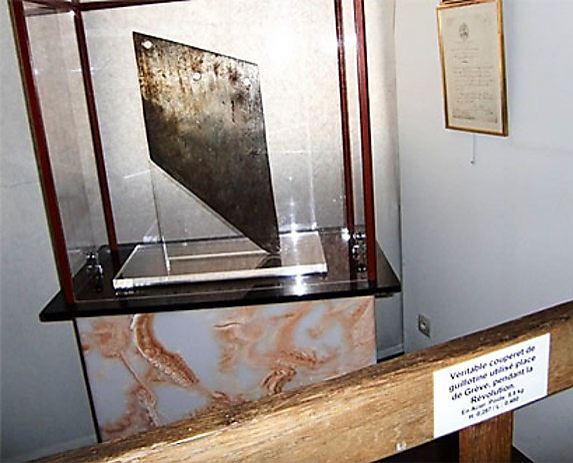
Click here to read the blog The Parisian Bluebeard is Guillotined, the story of Henri Landru.
Click here to read the blog, Dr. Jekyll and Mr. Hyde, the story of Dr. Marcel Petiot.
Crypte Archéologique de l’Île de la Cité
Anyone interested in the history of Paris will want to make time to visit the archaeological crypt on the Île de la Cité. Rick Steves says, “The archaeological crypt is a worthwhile 15-minute stop if you have a Paris Museum Pass.” I guess that’s why I cringe when people ask me if my books are like the ones Steves writes (or whoever writes them). The Île de la Cité is where Paris began. Between 1965 and 1972, excavations on the island revealed the existence of ruins below the surface.
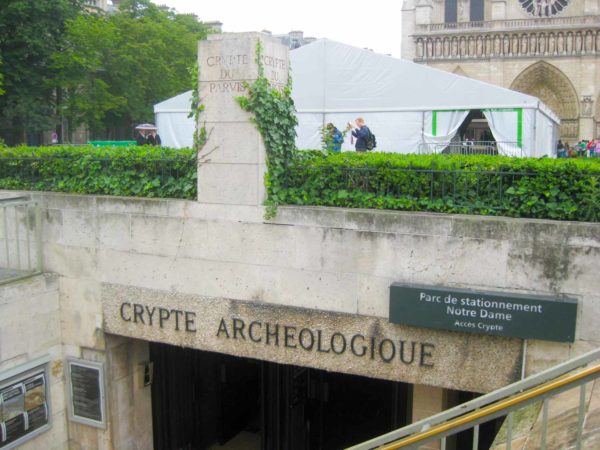
The original inhabitants lived close to the water’s edge, but over the centuries, the height of the island grew well above the level of the river. By the Late Middle Ages, the island reached its present-day height relative to the Seine. As you descend the steps into the crypt, your tour will begin with the southern route. You will stop to see the ramparts (or walls) of the 4th-century. As you enter one room, the excavated ruins of the ancient quay (wharf or dock) are visible. You are close to being at the original level of the island.
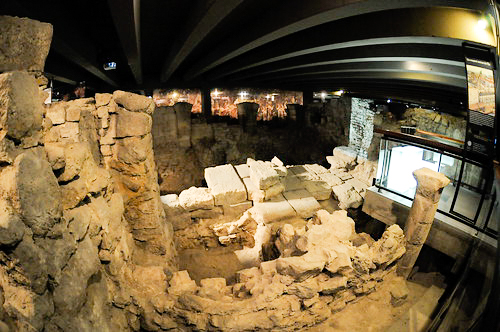
The tour of the north route takes you to ancient Roman-Gallo houses from the 3rd-century. Retail shops from the Middle Ages are next. By the mid-12th century, the old houses on Rue Neuve-Notre-Dame had been demolished and replaced with newer ones. The wells and cellars from the original houses have been excavated and are visible on this walk.
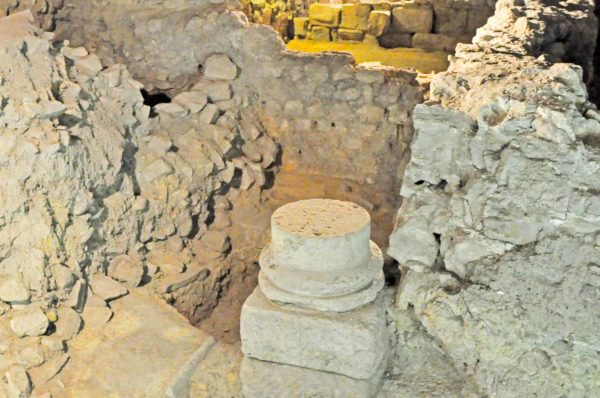
I guarantee you will want to spend more than fifteen minutes visiting the crypt.
Mémorial de la Shoah
This is a memorial to the victims of the Shoah, or Holocaust. It is a museum, documentation center, and a place of remembrance. Its mission is to shed light on the past to better understand the future. There is a permanent exhibition on the Holocaust and the history of France’s Jews during the war. The memorial also hosts temporary exhibitions, film screening, the Jewish Documentation Center, a reading room, and much more. The Shoah Memorial is built on the site of the Mémorial du martyr juif inconnu, or Memorial to the Unknown Jewish Martyr.
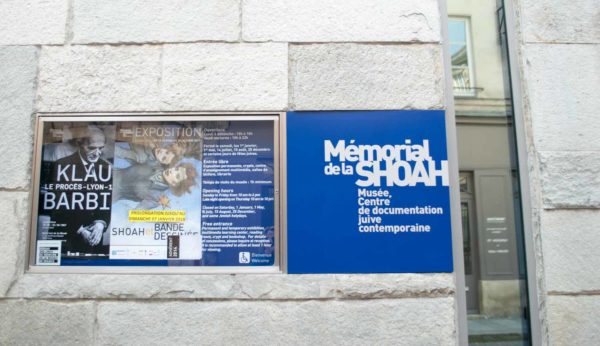
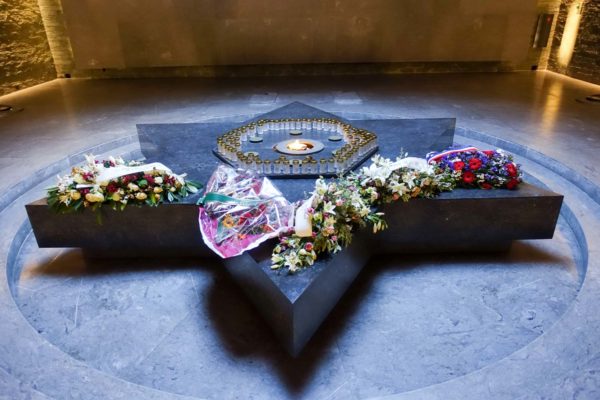
The Mémorial de la Shoah is home to the Fichier Tulard, or the Tulard Files. André Tulard (1899−1967) worked for the Paris police department and was responsible for documenting every Jew living in and around Paris. All Jews were required to declare themselves to the police and Tulard created a card file system in March 1941. Information gathered for their individual files included children, parents, grandparents, religious affiliation, education, military service, and professional activities. They had to outline all property including income and debts. Most importantly, Jews had to divulge the address where they could be located. About 150,000 Jews registered with the police and completed the required information. Tulard was efficient in his efforts to keep the files updated and the French police used the files in their efforts to arrest Jews during the infamous roundups, breaking the law or regulation, or any other transgression. Today, while the Tulard Files are the responsibility of the Archives nationales, or National Archives, the files are kept in the crypt of the Mémorial de la Shoah.
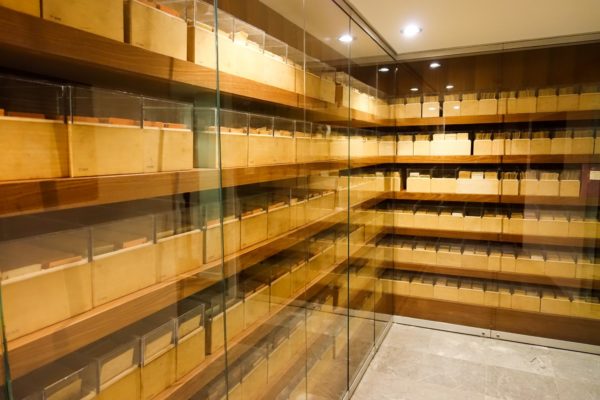
More Museums To Visit
Musée national des Monuments Français
(The French Monuments Museum)
www.citedelarchitecture.fr/fr/informations-pratiques
Place du Trocadéro (16e) – Métro: Trocadéro
Musée des Arts et Métiers
(Inventions, technology, and machines)
www.artsetmetiers.fr
60, rue Reaumur (3e) – Métro: Arts-et-Métiers
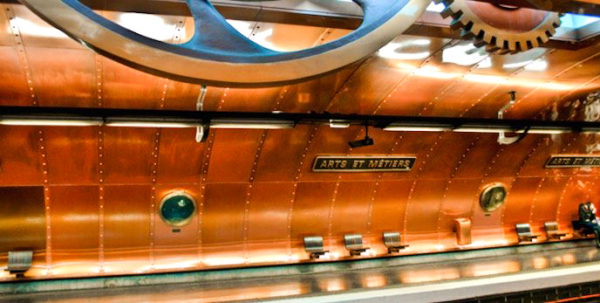
Musée de la Vie Romantique
(Museum of the Romantic Life)
www.vie-romantique.paris.fr
16, rue Chaptal (9e) – Métro: Blanche
Musée Jacquemart-André
(Museum of the 19th-century and the Belle Epoch era)
www.musee-jacquemart-andre.com
158, bd Haussmann (8e) – Métro: Miromesnil
Musée Nissim de Camondo
(Museum of the 18th- and 19th-centuries)
www.madparis.fr
63, rue de Monceau (8e) – Métro: Villiers
Musée Cognacq-Jay
(Museum dedicated to the Age of Enlightenment)
www.cognacq-jay.paris.fr
8, rue Elzevir (3e) – Métro: Saint-Paul
Musée de la Poste
(Museum dedicated to stamps and postal memorabilia)
www.museedelaposte.fr
34, bd de Vaugirard (15e) – Métro: Montparnasse
Musée de Montmartre
(Oldest house in Montmartre – history of Montmartre quarter)
www.museedemontmartre.fr
12, rue Cortot (18e) – Métro: Abbesses or Anvers
Musée de la Marine – Palais de Chaillot
(Maritime history of France)
www.musee-marine.fr
17, place du Trocadéro (16e) – Métro: Trocadéro
Château de Vincennes
(Castle and former royal residence)
www.chateau-vincennes.fr
Avenue de Paris, Vincennes – Métro: Château de Vincennes
Musée des Egouts de Paris
(Museum of Paris underground sewers)
www.paris.fr
Pont de l’Alma; in front of 93, quai d’Orsay (7e) – Métro: Pont de l’Alma
Musée de l’Armée – Hôtel national des Invalides
(Museum of armed forces, collection of arms and combat gear)
www.musee-armee.fr
129, rue de Grenelle (7e) – Métro: Latour-Maubourg
Musée de l’Ordre de la Libération – Hôtel national des Invalides
(Museum of the Order of the Liberation)
www.ordredelaliberation.fr
129, rue de Grenelle (7e) – Métro: Latour-Maubourg
Le Panthéon
(Memorial to honor great French men and women)
www.paris-pantheon.fr
Place du Panthéon (5e) – Métro: Maubert-Mutualité
Musée national d’histoire Naturelle
(National history museum – multiple sites)
www.mnhn.fr
Jardin des Plantes – 36, rue Geoffroy Saint-Hilaire (5e) – Métro: Jussieu
Musée d’histoire de la Médecine
(Collection of antique medical instruments)
www.u-paris.fr
12, rue de l’Ecole de Médecine (6e) – Métro: Odéon
Musée de Victor Hugo
(Apartment where the great writer lived and worked from 1832 to 1848)
www.maisonsvictorhugo.paris.fr
6, place des Vosges (4e) – Métro: Chemin-Vert
Musée d’art et d’histoire du Judaïsme
(Museum of Jewish art and history)
www.mahj.org
Hôtel de Saint-Aignan
71, rue du Temple (3e) – Métro: Rambuteau
Tour Jean Sans Peur
(Medieval residence of the dukes of Burgundy; last remaining structure of the Hôtel de Bourgogne; oldest toilet in Paris)
www.tourjeansanspeur.com
20, rue Étienne-Marcel (2e) – Métro: Étienne-Marcel
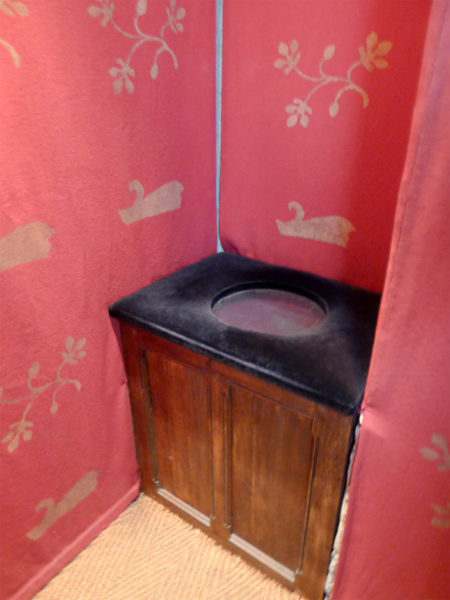
Conciergerie
(Former medieval palace and a prison during the French Revolution)
www.paris-conciergerie.fr
2, bd du Palais (1er) – Métro: Châtelet
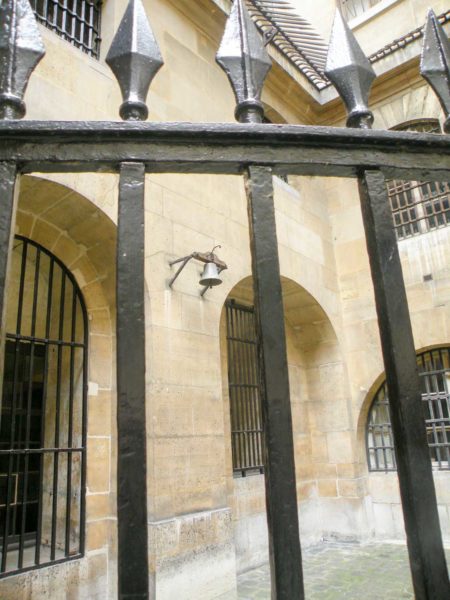
Les catacombs de Paris
(Underground catacombs containing the remains of millions of Parisians)
www.catacombes.paris.fr
1, ave. Colonel Henri Rol-Tanguy (14e) – Métro: Denfert-Rochereau
★Learn More About Paris History Museums★
Please keep in mind that the information below can change at any time. Entrance fees are not listed as they change frequently. Before you visit at site, I suggest you check its website for current information (and even then, that’s not guaranteed⏤trust me, we know).
Musée Carnavalet
www.carnavalet.paris.fr
23, rue de Sévigné (3e) – Métro: St. Paul or Chemin Vert
Daily; 10:00 a.m. – 6:00 p.m.
Closed Monday
Musée national du Moyen Âge
www.musee-moyenage.fr
28, rue du Sommerard (5e) – Métro: Cluny-Sorbonne
At this time, the museum is closed for renovations until early 2022.
The Louvre
www.louvre.fr
Rue de Rivoli (1er) – Métro: Louvre-Rivoli
Daily; 9:00 a.m. – 6:00 p.m.
Closed Tuesday
Bresc-Bautier, Geneviève. The Louvre, a Tale of a Palace. Paris: Musée du Louvre Éditions, 1995.
Musée de la liberation de Paris
www.museeliberation-leclerc-moulin.paris.fr
4, avenue du Colonel Henri Rol-Tanguy (14e) – Métro: Denfert-Rochereau
Daily; 10:00 a.m. – 6:00 p.m.
Closed Monday
Musée de la prefecture de Police
Musée de la prefecture de Police Paris info museum web-site
or
Musée de la prefecture de Police – museum web-site
4, rue de la Montagne Sainte-Geneviève (5e) – Métro: Maubert-Mutualité
Second floor
Daily: 9:30 a.m. – 5:00 p.m.
Closed Saturday & Sunday
Third Saturday of each month: 10:30am – 5:00pm
Crypte archéologique de l’île de la Cité
www.crypte.paris.fr
7, place Jean-Paul II
Parvis Notre-Dame (4e) – Métro: Cité or Saint-Michel Notre-Dame
Daily: 10:00 a.m. – 6:00 p.m.
Closed Monday
Mémorial de la Shoah
www.memorialdelashoah.org
17, rue Geoffroy-l’Asnier (4e) – Métro: Pont Marie
Sunday−Thursday; 10:00 a.m. – 5:30 p.m.
Closed Friday & Saturday
Disclaimer:
There may be a chance that after we publish this particular blog, the video links associated with the blog are no longer accessible. We have no control over this. Many times, whoever posts the video has done so without the consent of the video’s owner. In some cases, it is likely that the content is deemed unsuitable by YouTube. We apologize if you have tried to access the link and you don’t get the expected results. Same goes for internet links.
What’s New With Sandy and Stew?
Well, I hope this is one of the last updates I have for you on the status of the new book. Our book designer, Roy, now has our completed and edited manuscript along with the images. His next step is to produce what is called the “galley.” This is the final mock-up of the entire book that will go to the printer. I have my fingers crossed that we can send the finalized manuscript to Pollack Printing by mid-November at the latest.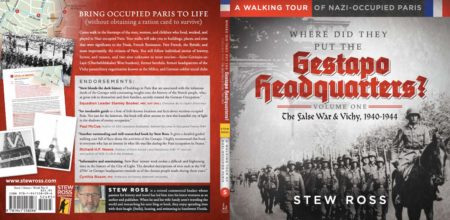
I’m about seventy percent done with the second volume (Roundups and Executions). I should have that book completed by early next year. The only thing I anticipate holding us back will be a trip to Paris (aw, shucks 🤞 ). Two of the Métro Walks are KZ Natzweiler-Struthof and the Bobigny rail station. Since both stops are new to the expanded book series, Sandy and I need to personally visit both sites. The former concentration camp and its offsite gas chamber, located in the Vosges mountains south of Strasbourg, are closed in January and February due to inclement weather. I expect the earliest we could get there would be May 2022. The Bobigny station was the point of departure for the Paris deportation trains from July 1943 to the last convoy (no. 79) that left on 18 August 1944. The station was closer to the Drancy transit camp and did not have crowds watching the human cargo being loaded into the boxcars. More than twenty thousand Jews were deported from this station to KZ Auschwitz II-Birkenau.
Thanks to all of you including Patrick M., David L., and Kristin G., for sending us e-mails inquiring about the status of the book. We appreciate your interest and we’re confident we can get this little project wrapped up shortly.
Thank you to all of you who subscribe to our bi-weekly blogs. It seems there isn’t a day that goes by where we don’t increase our readership. Please let your history buff friends and family members know about our blog site and blogs.
Someone Is Commenting On Our Blogs?
I’d like to thank Dr. Roger R. for contacting us regarding our blog, The White Buses. (Click here to read the blog.) Roger and a graduate student are in the initial phase of researching a story for a new book about the White Buses. I’ve asked Roger to consider writing a future guest blog about new facts they uncover. I suspect they might find some newly released classified documents that may shed some light on unanswered questions.
If there is a topic you’d like to see a blog written about, please don’t hesitate to contact me. I love hearing from you so keep those comments coming.
Why Would You Want to Buy Our Walking Through History Books?
Simple.
You like to travel and experience history and historical events. You like to see original buildings that had a significant impact on the people and events of the history you’re engaged with. You want to know the stories behind the brick and mortar in front of you.
The walking tour books are meticulously researched so you can go directly to those sites and learn about the building’s history as well as an introduction to some of the more interesting people associated with it.
We Need Your Help
Please tell your friends about our blog site and encourage them to visit and subscribe. Sandy and I are trying to increase our audience and we need your help through your friends and social media followers.
Thank You
Sandy and I appreciate you visiting with us. We have some exciting things on the horizon, and we’ll keep you updated as we go along.
Share This:
Follow Stew:
Find Stew’s books on Amazon and iBooks.
Please note that we do not and will not take compensation from individuals or companies mentioned or promoted in the blogs.
 Walks Through History
Walks Through History
Copyright © 2021 Stew Ross

